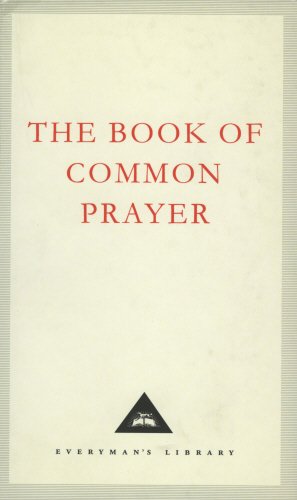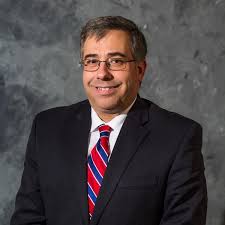Hi! I’m Fred Zaspel, editor here at Books At a Glance, and we are continuing our discussions with Dr. Andre Gazal who is sketching out the English Reformation for us. Today, we talk to him about Thomas Cranmer and the Book of Common Prayer.
Andre, welcome again!
Gazal:
Thank you, again, it’s good to be with you.
Zaspel:
Who was Thomas Cranmer? And for us independent types, what is a Book of Common Prayer?
Gazal:
Thomas Cranmer was Archbishop of Canterbury, originally appointed to the position by Henry VIII in 1532. He was instrumental in affecting Henry’s divorce from Catherine of Aragon and marrying him to Anne Boleyn. He assisted Henry VIII in many of his endeavors, but Cranmer doesn’t become the central figure, or one of the central figures of the Reformation until the reign of Edward VI. It is there where he really does become a central figure under the authority of the various regents who were more or less governing the country during Edward’s minority. But he was mostly involved in affecting an evangelical agenda for the Church of England during the reign of Edward VI. And in that regard, his most notable achievement as Archbishop of Canterbury during that time was his role in producing the Book of Common Prayer.
The Book of Common Prayer is a book of liturgy, or a book of orders of service. The orders of service contained in the Book of Common Prayer are what we call the Order of Morning Prayer, which would be a morning service; Evening Prayer, an evening service; very significantly, the Order of Holy Communion, or the communion service; and then that would be followed by various other types of services like Confirmation, Ordination, Matrimony, and so forth. Probably one of the best-known features of the Book of Common Prayer are the various short prayers known as Collects. There is one Collect for every week of the church year, and these Collects are probably the best-known features of the Book of Common Prayer. Today the Book of Common Prayer is the standard liturgy that is used by Anglican churches, although there are different versions of it from country to country.
Zaspel:
What was Cranmer’s role in producing the Book of Common Prayer?
Gazal:
Mainly, Cranmer was the chief editor. He also wrote many of the Collects himself.
Zaspel:
And it’s Cranmer’s Book of Common Prayer that is still in use today?
Gazal:
Yes.
Zaspel:
Cranmer produced two editions of the Book of Common Prayer, 1549 and 1552. Why and what are the differences?
Gazal:
Thank you for the question.
For one thing, Cranmer was up against some very stiff traditionalist opposition, especially from such opponents as Stephen Gardner and others who were very, very adamant about the traditional medieval view of communion, or the Eucharist, especially with regards to transubstantiation and so forth. There are different views on this by different scholars, but the one to which I would hold would be this: when Cranmer edited the Book of Common Prayer and wrote the various Collects for it, he intended the 1549 to be a temporary stopgap, if you would, in anticipation of the one he truly intended, which would be the 1552.
One of the differences chiefly lay in the communion service. For instance, the 1549 says, with respect to receiving of the bread and the wine, “the body of our Lord Jesus Christ which was given to preserve your soul and body into everlasting life.” Now, one could infer any number of different views of the Lord’s Supper from that statement. One can infer transubstantiation; one can infer from that a Lutheran view of real presence; one could even infer something of a reformed view. Interestingly enough, there are reformers from the Continent who were there at the time, assisting in some of this and giving their critique of the 1549 book. One of these was by Martin Bucer. And then Cranmer incorporated some of those changes, some of Bucer’s suggestions into the later 1552 book, along with what I would believe were his own intentions as well. But here’s how the Lord’s Supper service or the Order of Holy Communion looks like in the 1552 book: “Eat this in remembrance that Christ died for thee and feed upon him in thy heart with Thanksgiving.” So, the 1552 book is a decidedly more evangelical and certainly a more reformed liturgy than the 1549. What’s interesting is that the subsequent editions of the prayer book are largely then based chiefly on the 1552.
Zaspel:
Were there other aspects of Cranmer’s reforming program?
Gazal:
There were indeed. In order to compensate for the dearth of preaching in England when he became Archbishop, and as he and other colleagues were trying to improve the level of theological education at the universities of Oxford and Cambridge, and knowing that there were many priests who did not know how to preach, Cranmer and his colleagues were instrumental in producing a Book of Homilies. These would be written sermons on various relevant subjects that the ministers who could not preach were to preach through, throughout the church year. That was what we call the First Book of Homilies.
Secondly, there was the doctrinal statement from the Church of England, what we call the Articles of Religion. The Articles of Religion that Cranmer and his colleagues developed would eventually become The Thirty-Nine Articles under Elizabeth, which, today, is still the doctrinal statement that you will find in the Book of Common Prayer, and has been somewhat considered the doctrinal statement of the Church of England and the Anglican Communion in general.
Then there was an attempt to reform ecclesiastical legislation, or the way the church was run, by way of a reform of canon law, or church law. The product of that was the Reformatio. The problem with that was that the Reformatio was never enacted, but the others were.
Cranmer’s influence certainly comes by way of the Articles of Religion that he and his colleagues initially produced which then undergo later revision under Elizabeth and become the Thirty-Nine Articles, the Book of Homilies, and also an attempt at reform of Canon Law.
Zaspel:
Can you give us just a brief glance at his later life—the trials, recantations, and death?
Gazal:
That’s probably the most tragic episode of Cranmer’s life.
When Mary Tudor ascended the throne, she had him deposed, and along with him, Nicholas Ridley and Hugh Latimer, for treason. We’ll talk about that when we deal with Jane Grey, but nevertheless, they were initially deposed, and removed from office for treason. There is a horrific trial to which Cranmer, Latimer, and Ridley are all subjected. Afterwards Cranmer is imprisoned and watches his two friends, Latimer and Ridley, burn at the stake. He is under a lot of psychological pressure because priests would come in and keep asking him questions constantly, interrogating him constantly. Eventually, given the culmination of all of those factors, Cranmer finally broke down. He signed articles of recantation, renouncing everything he had ever taught, everything he had written, everything he had worked for. Then, finally, when he was supposed to make a public recantation in St. Mary’s at Oxford, he recanted his recantation which resulted in his finally being burned at the stake. One of the most interesting and one of the most vividly dramatic aspects of that episode was when, while he was being burned at the stake, he thrust his hand into the flames – the hand with which he had signed his recantation.
Zaspel:
Quite a statement it was.
We’re talking to Dr. Andre Gazal about the English Reformation. Next time he will be back to talk to us about Lady Jane Grey. Thanks for joining us.
Buy the books

The Book Of Common Prayer: 1662 Version
